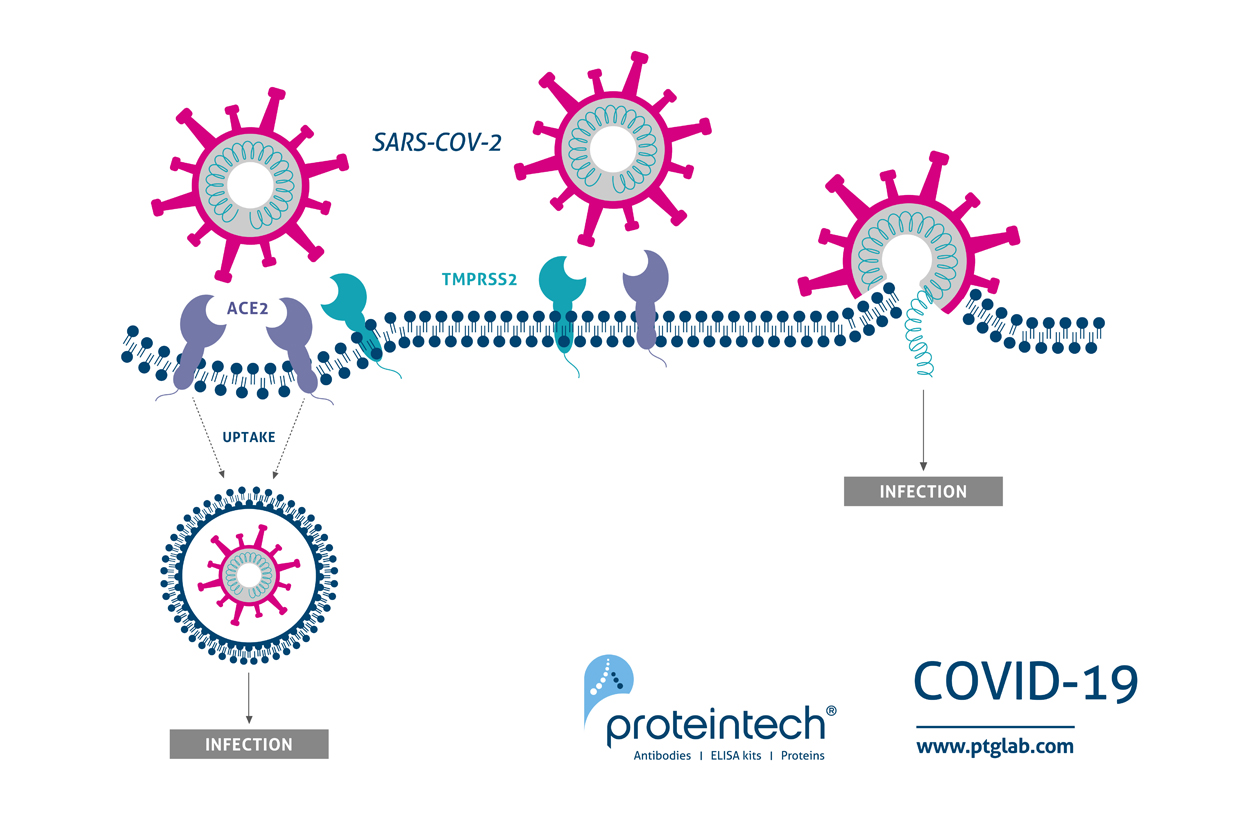Patient-derived anti-SARS-CoV-2 recombinant antibodies
Non visible text
| Catalog number | Product name | Applications | Species reactivity | Publications |
| 60099-1-Ig | Human IgA Monoclonal Antibody | WB, IHC, IF, ELISA | Human | 1 |
| 66484-1-Ig | Human IgM Monoclonal Antibody | WB, IHC, IF | Human | |
| CL488-66484 | CL488-human IgM Monoclonal Antibody | WB, IHC, IF | Human | 1 |
| CL594-66484 | CL594-human IgM Monoclonal Antibody | WB, IHC, IF | Human | |
| 11016-1-AP | Human IgM Polyclonal Antibody | WB, IHC | Human | |
| 10284-1-AP | Rabbit Anti-Human IgG | WB, IHC | Human | 3 |
| HRP-66484 | HRP-Conjugated Human IgM Antibody | WB, ELISA | Human |
| Catalog number | Product name | Applications | Species reactivity | Publications |
| 14955-1-AP | Human OAS1 Polyclonal Antibody | IF, IHC, WB, | Human, Mouse, Rat | 5 |
| 19279-1-AP | Human OAS2 Polyclonal Antibody | IF, IHC, IP, WB, | Human, Mouse | 7 |
| 21915-1-AP | Human OAS3 Polyclonal Antibody | WB. IHC, IF | Human | 1 |
| Catalog number | Product name | Applications | Species reactivity | Publications |
| 12216-1-AP | Human Cathepsin B Polyclonal Antibody | FC, IF, IHC, WB, | Human, Mouse | 15 |
| 14437-1-AP | Human TMPRSS2 Polyclonal Antibody | IHC, WB, | Human, Mouse, Rat | 7 |
| Catalog number | Product name | Applications | Species reactivity | Publications |
| 13744-1-AP | Human TRIM22 Polyclonal Antibody | IHC, WB, | Human, Mouse | 2 |
| 10326-1-AP | Human TRIM32 Polyclonal Antibody | IF, IHC, WB, | Human, Mouse, Rat | 2 |
| 10851-1-AP | Human TRIM11 Polyclonal Antibody | IHC, WB, | Human | 6 |
| 11476-1-AP | Human TRIM5 Polyclonal Antibody | WB | Human, Mouse | |
| 67492-1-Ig | Human TRIM5 Monoclonal Antibody | WB | Human | |
| 13623-1-AP | Human TRIM15 Polyclonal Antibody | IF, WB | Human, Mouse | 3 |
|
SARS-CoV-2 viral entry and impairment of sense of smell - Research published in ACS Chemical Neuroscience by Bilinska et al. Summary provided by Rafal Butowt, PhD, Department of Molecular Cell Genetics, L. Rydygier Collegium Medicum, Nicolaus Copernicus University (Poland), corresponding author. In the current coronavirus pandemic, a relatively large number of patients have a total loss (anosmia) or deficit of smell (hyposmia), but the mechanism is unknown. Using a mouse model, we showed that cells in the olfactory epithelium lying within the nasal cavity express host receptors that enable the SARS-CoV-2 virus to enter and infect selected cells. We identified these cells as sustentacular cells which are located near olfactory receptor neuronal dendrites containing odorant receptors. These cells are metabolically coupled with olfactory receptor neurons, participating in detoxification, odorant-desensitization and as an energy supplier to the olfactory neurons. Thus, SARS-CoV-2 infection of sustentacular cells could explain the olfactory deficient phenotype in COVID-19 patients. We also show that some proteins important for SARS-CoV-2 entry are at higher levels in older mice olfactory epithelium than in younger mice. It is speculated that sustentacular cells in the olfactory epithelium may contain more SARS-CoV-2 viral particle than cells in the oral cavity, making it easier to detect people that are infected with the virus. Butowt and colleagues used Proteintech’s ACE2 antibody (21115-1-AP) to detect expression of the target in olfactory tissue throughout the study. Proteintech’s HSP25 antibody (18284-1-AP) was used to mark sustentacular cells of the olfactory epithelium. |
|
Pathogenesis of SARS-CoV-2 in human respiratory tract and conjunctiva. Research published in The Lancet Respiratory Medicine featuring Proteintech’s CC10/Uteroglobin (10490-1-AP). |
|
MTHFD1 Antibody (10794-1-AP) - Anderson et al. |
|
No evidence that androgen regulation of pulmonary TMPRSS2 explains sex-discordant COVID-19 outcomes TMPRSS2 Antibody (14437-1-AP) – Baratchian et al. |
|
LY6E Restricts the Entry of Human Coronaviruses, including the currently pandemic 4 SARS-CoV-2 LY6E Antibody (22144-1-AP) - Zhao et al |



